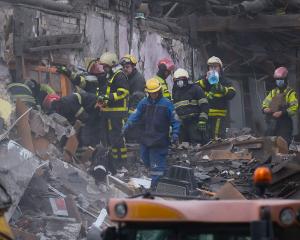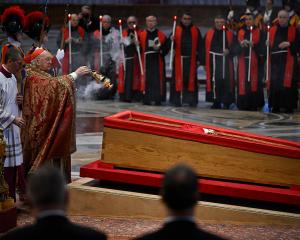Three months after the deadly anthrax mailings, the commander of the top US military biodefense lab declared that Army scientists there lacked the expertise to produce the bacteria used in the attacks.
Now, the post is confronting what one called the "devastating" claim that one of their own killed five people and rattled Aemricans just weeks after the Sept. 11, 2001, terror attacks.
The Justice Department's assertion that the anthrax attacks were carried out solely by Bruce Ivins, a veteran microbiologist and anthrax vaccine expert at Fort Detrick who killed himself last week, has tarnished the reputation of the secret Army facility located here and delivered a sharp blow to its expansion plans.
The leader of a citizens group critical of Fort Detrick's growth proposal said evidence the government released this week about Ivins' long-standing psychological problems and his likely role in the 2001 anthrax attacks underscores claims that the Army has not thoroughly assessed the risk of threats from within the lab.
The Army insists the security practices and worker-screening program at the US Army Medical Institute of Infectious Diseases, or USAMRIID, are "designed to ensure that each person who has access to sensitive materials meets the highest standards of reliability."
Ivins, 62, who spent three decades at the facility, committed suicide as federal authorities were preparing to charge him with mailing the anthrax-laced letters that killed five people and sickened 17 others in the fall of 2001. His lawyer contends the Justice Department hasn't proven Ivins was the killer.
Ivins' colleague Dr. W. Russell Byrne, who headed USAMRIID's bacteriology division from late 1998 to early 2000, said Thursday the case was "incredibly damaging" to biodefense work.
"This is devastating, not only to USAMRIID, but pretty much all government research," Byrne said. "The implication is that USAMRIID can't be trusted to police itself." He stressed that that was not his opinion.
Byrne said the disclosures about Ivins also have likely hurt the Army's billion-dollar plan to replace USAMRIID's 38-year-old main building and build a larger laboratory complex as part of a proposed interagency biodefense campus at Fort Detrick.
Beth Willis of Frederick Citizens for Bio-Lab Safety said the Ivins case proves that a closer examination of the lab expansion plan is warranted. The group is seeking a National Academy of Sciences review of the Army's environmental impact statement for the project, contending, among other things, that it doesn't adequately assess the risk of a disgruntled worker exposing the public to deadly germs.
"As these labs expand and there are more workers, less experienced workers, the possibility of internal sabotage and people with nefarious intent simply grows," Willis said.
Army officials have said the environmental assessment was thorough.
The government's allegations against Ivins rebut the position long held by Fort Detrick leaders that no one from the lab could have sent the letters. In December 2001, then-Fort Detrick commander Maj. Gen. John S. Parker scorned suggestions that USAMRIID might be involved.
"We don't have that capability here nor do we have the scientists who know how to do that," Parker said at the time. "I can't give credibility to others who say they would have had to have been in our program." Byrne said Thursday that he still wasn't convinced Ivins did it, and that Fort Detrick's biodefense program is sound.













